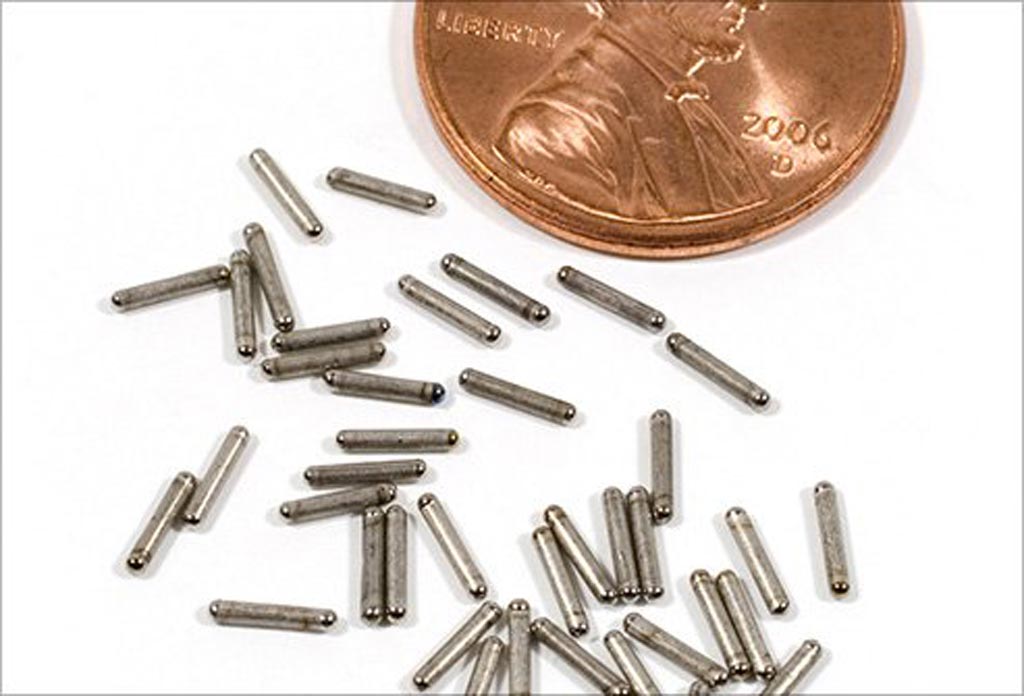Brachytherapy Optimal for Intermediate-Risk Prostate Cancer
By MedImaging International staff writers
Posted on 14 Jan 2019
A new study reveals that brachytherapy causes less toxicity during treatment of prostate cancer than a combination of brachytherapy plus external beam therapy (EBT).Posted on 14 Jan 2019
Researchers at Emory University (Atlanta, GA, USA), Cedars-Sinai Medical Center (Los Angeles, CA, USA), Bon Secours Cancer Institute (Richmond, VA, USA), and other institutions conducted a study to evaluate progression-free survival and patient-reported outcomes in two separate treatment arms, the first treated with partial pelvis brachytherapy alone, and the second treated with a combination of brachytherapy + EBT.

Image: Brachytherapy seeds provide better results for intermediate-risk prostate cancer, according to a new study (Photo courtesy of Alamy).
Men with prostate carcinoma were randomly assigned to one of the treatment arms; the researchers then measured changes from baseline to four and 24 months using expanded prostate index composite (EPIC) score and three prostate cancer-specific patient-reported outcome domains (bowel, urinary, and sexual). The results showed that at 24 months the men on the brachytherapy + EBT arm reported poorer urinary, bowel, and sexual patient-reported outcomes and much greater toxicities (13%) than the brachytherapy alone arm (7%).
In addition, the researchers found that toxicity, the major symptom of concern, was underreported by clinicians, compared to patient reports. The clinicians reported late grade 3 bladder or genitourinary toxicities of 8% for the brachytherapy + EBT arm, and 3% for the brachytherapy alone arm, compared to the patients, who reported 34% bladder or genitourinary toxicities for brachytherapy + EBT and 23% for brachytherapy alone. The study was presented at the American Society for Radiation Oncology (ASTRO) annual meeting, held during October 2018 in San Antonio (TX, USA).
“Although progression-free survival was similar on both treatment arms, the addition of external-beam therapy yielded a higher percentage of clinician-reported late grade 3 or greater toxicities,” concluded lead author and study presenter Deborah Bruner, RN, PhD, of Emory University. “Patient-reported data confirms that brachytherapy alone is the superior treatment for men with intermediate risk prostate cancer, with less patient-reported side effects. Brachytherapy alone would also be the most cost-efficient treatment option for patients.”
Brachytherapy is a radiotherapy regimen in which a radioactive source is placed directly into or next to an organ or tissue. In the case of prostate cancer, two main types of brachytherapy are available. Low dose rate (LDR) brachytherapy involves the insertion of permanent radioactive sources (seeds) directly into the prostate, which release localized radiation to the entire prostate with the aim of destroying the cancer cells. (HDR) brachytherapy also involves radioactive material being placed directly into the prostate but for shorter periods, usually for a day or two at a time, and usually in conjunction with EBT.
Related Links:
Emory University
Cedars-Sinai Medical Center
Bon Secours Cancer Institute














